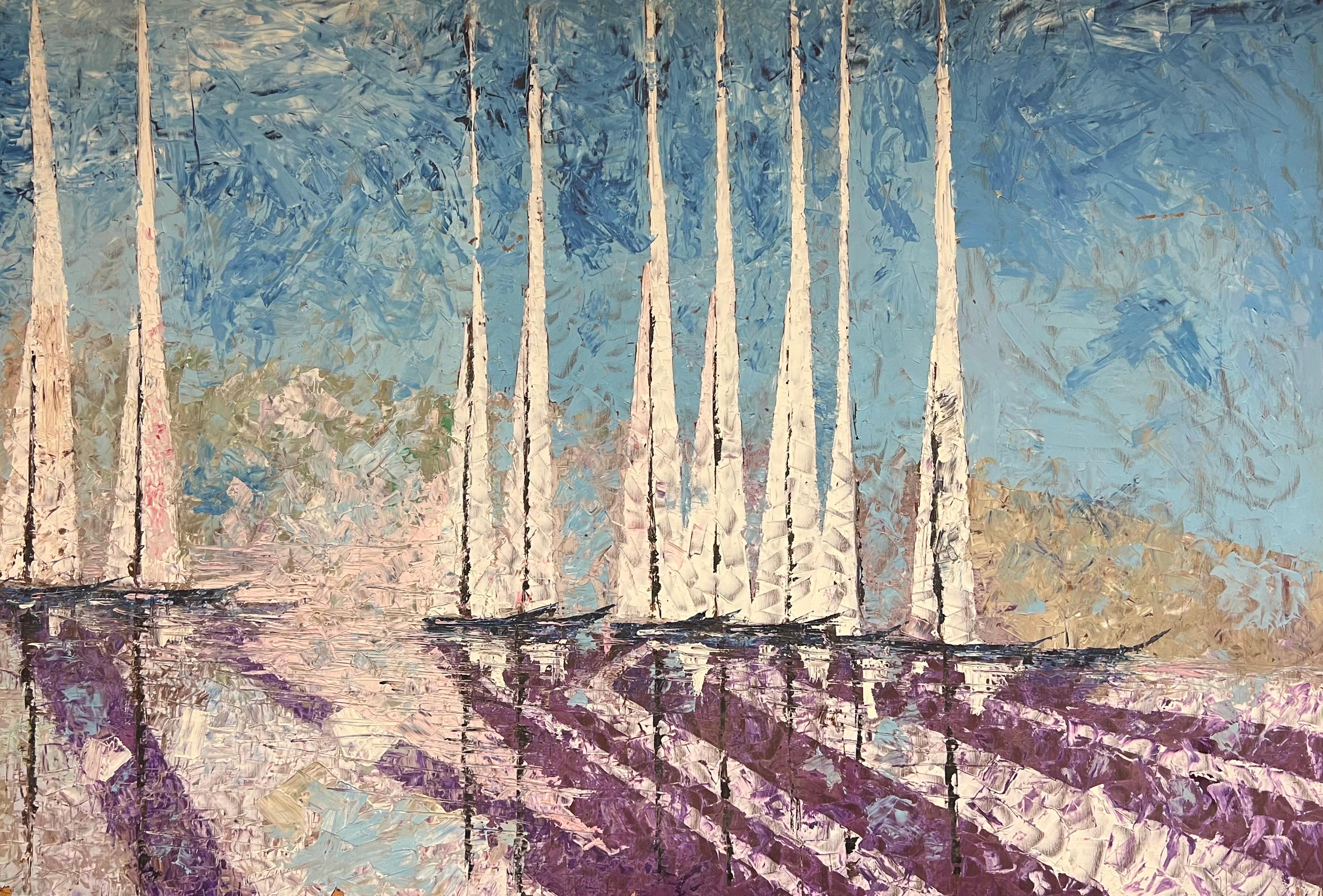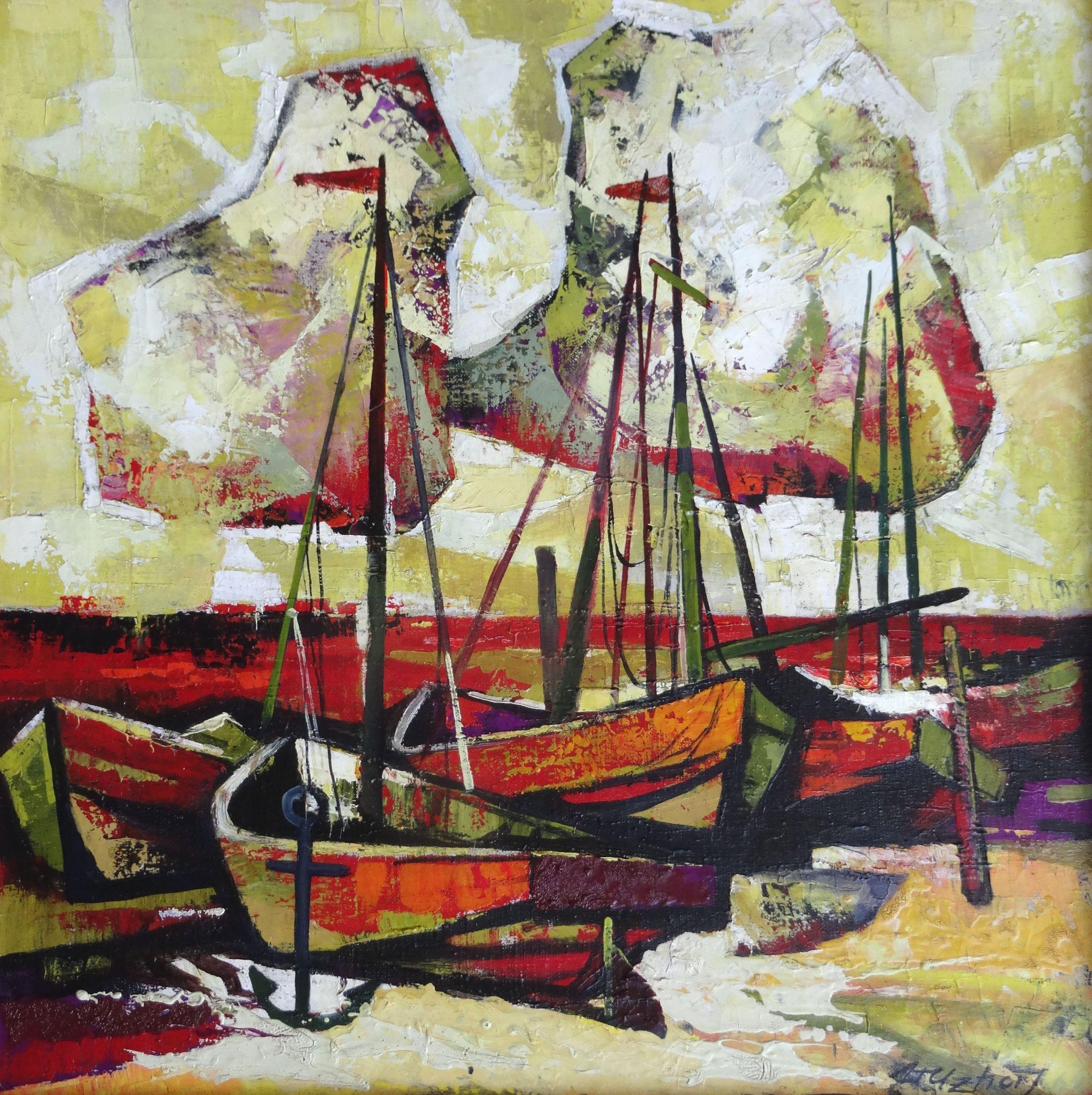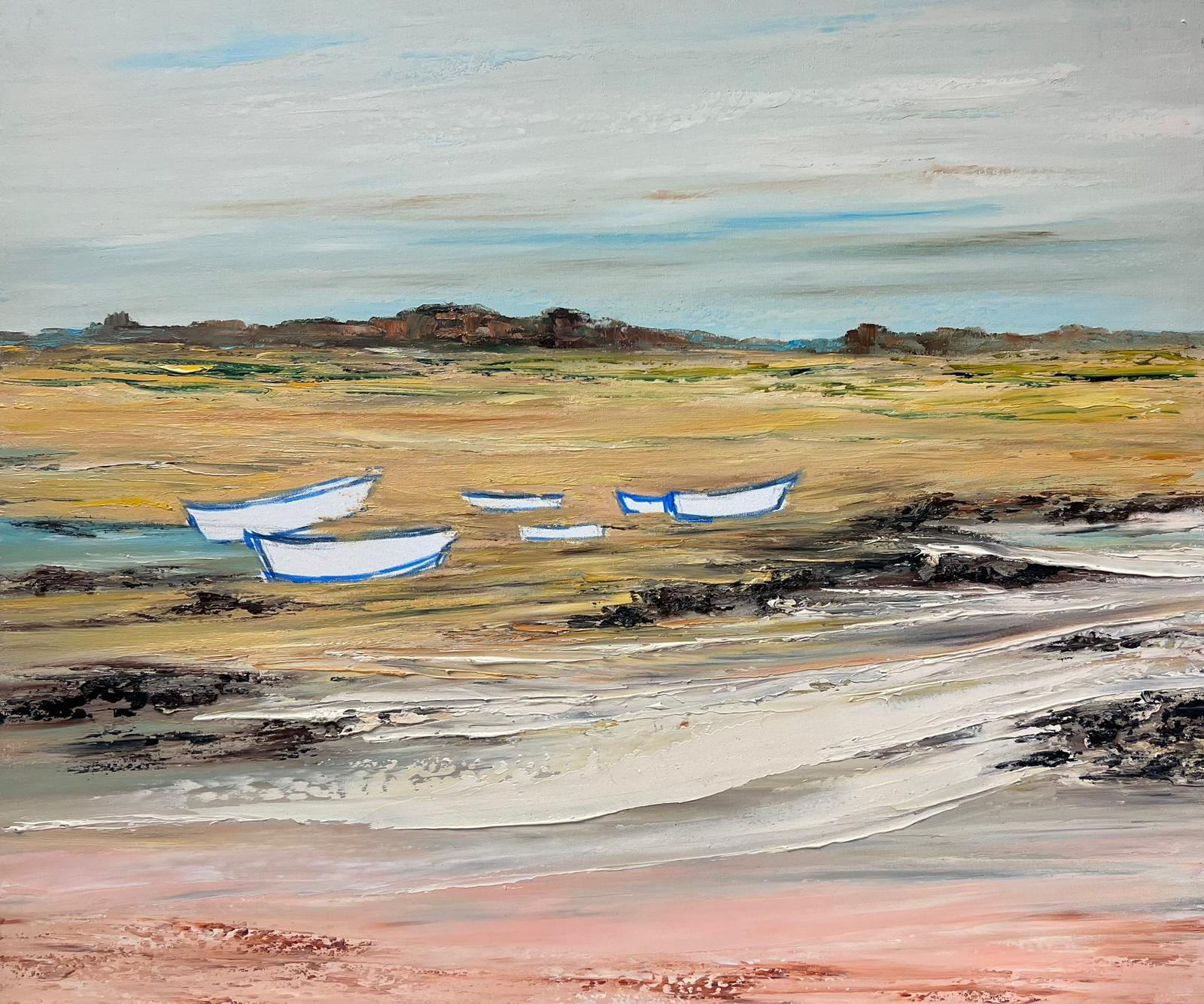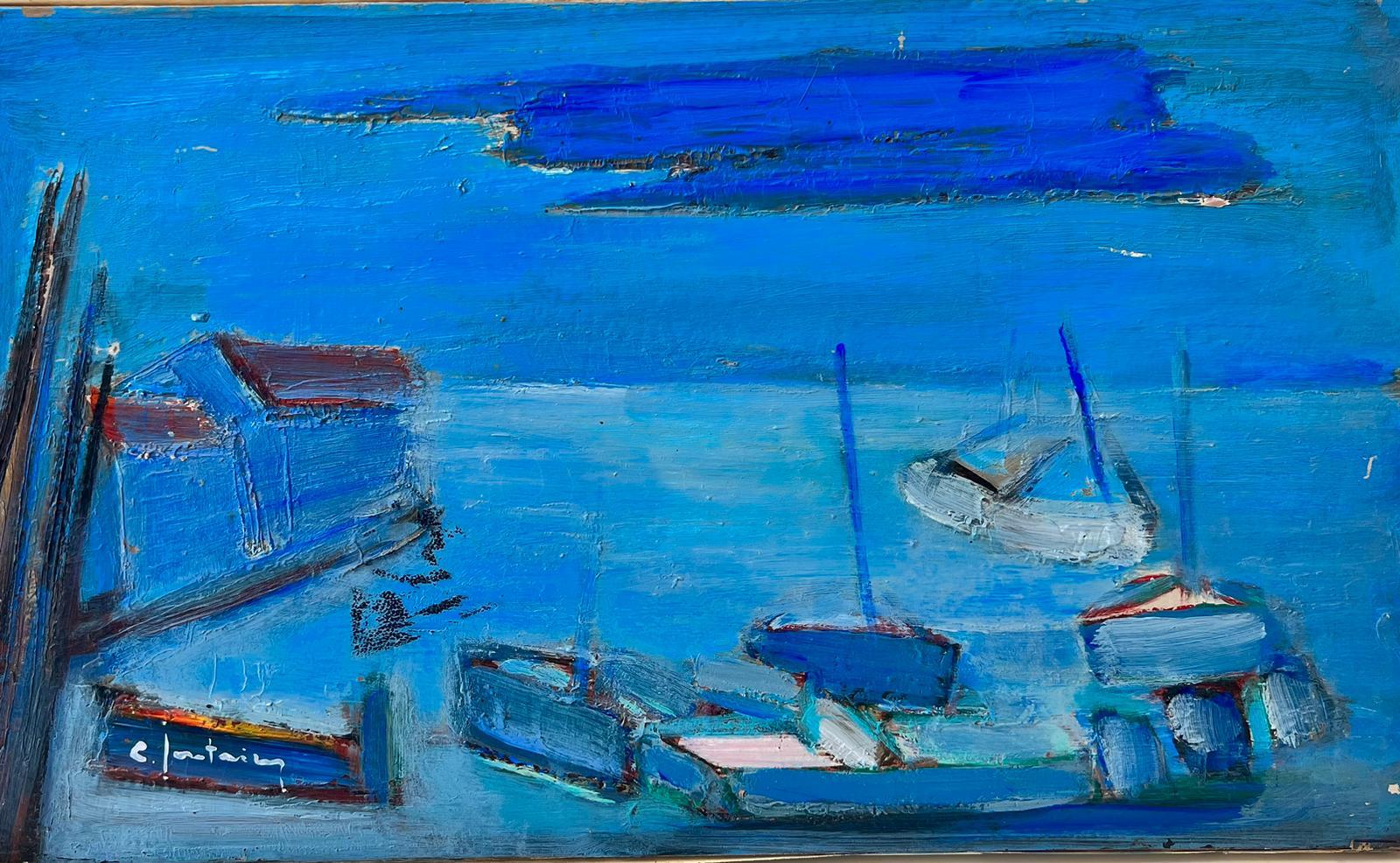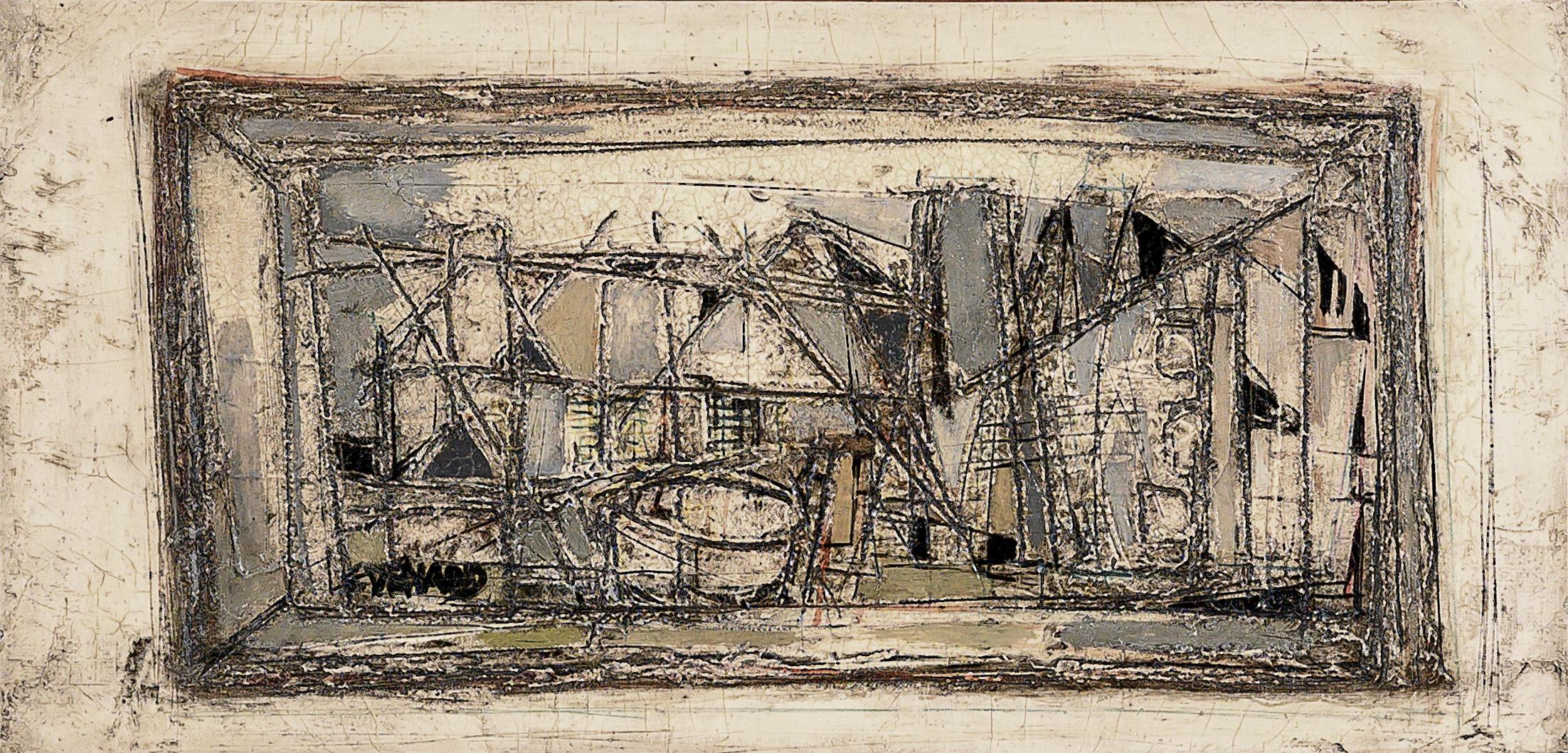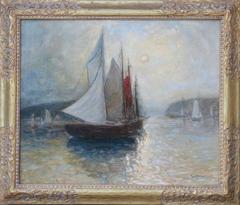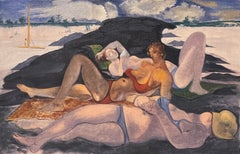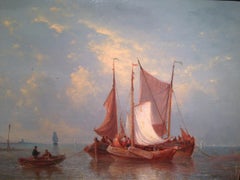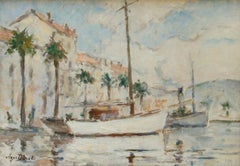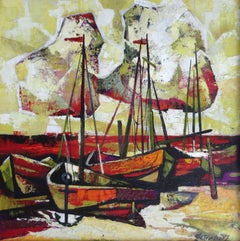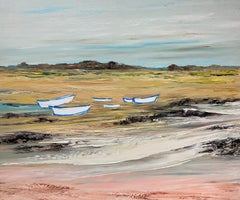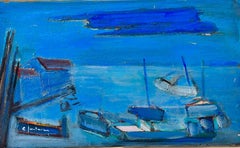Georges Dayez , born on July 29 , 1907 In Paris where he died in 1991 , is a French painter , engraver and lithographer of the new Ecole de Paris whose works have been regularly exhibited with those of non-figurative painters.
Georges Dayez is the eldest son of the editor Jules Dayez, a native of the North and a son of a peasant, who in 1905 had taken over a small-size engraving studio in Paris rue des Marais, printing in particular gravure reproductions of eighteenth- century images E century. His mother, Marie Brard, was born in Neuilly in a Norman family of Bayeux . After the birth of a second son, the family settled in Vaires-sur-Marne in 1909 where Georges Dayez attended the communal school from 1913 , took refuge for two months in Bayeux in 1914 , in Tinténiac ( Brittany ) In 1918 . In 1919 Georges Dayez obtained his certificate of studies and spent his holidays in Vicq , in the mining country of the north of Valenciennes , with his grandfather, the spectacle of the destruction caused by the war impressively him, then returns to the college of Meaux .
In 1924 , after spending the first part of the baccalaureate, he stopped studying to start painting, and studied phototypy and intaglio and lithography in his father's studio. He attended the Académie de la Grande Chaumière at Montparnasse and the Julian Academy in Saint - Germain - des - Prés , as well as the evening drawing courses of the City of Paris, which Adam also followed. In 1926 he was accepted as a "free pupil" in the studio of Lucien Simon at the Ecole des Beaux Arts . From 1927, he made his military service, assigned to Nanterre then to the Aeronautics Directorate of Paris, and painted in 1928 , on a permission, Le Pont du Pouliguen and Le Croisic vu de la Turballe , exhibited at the Salon Of autumn . During the evening that continues to frequent it is connected with Pignon . They learn together the modeling in the workshop of the sculptors Henry Arnold and Robert Wlérick , exciting for the cubists .
Released from military service in 1929 Georges Dayez painted with Pignon on the motif, notably on the banks of the Seine at Billancourt . They discovered the Côte d'Azur together in 1931 , participated in the activities of the Association of Revolutionary Writers and Artists (AEAR) the following year, with many painters (Hélion, Herbin ), sculptors (Adam), writers Nizan , Éluard , Aragon ) and exhibited at the Salon des indépendants . Georges Dayez, after long journeys by bicycle through France, visits from 1938 the museums of Ghent , Bruges , Antwerp and London . It is in 1939 mobilized in Metz , then crosses in 1940 Nancy , Troyes , Dijon , Nancy again, Mantes, Gisors , and, on foot, assists to the destruction of Vernon , Évreux and L'Aigle . Captured in Montaigu in Vendée , he was interned in Laval and released in December.
Back in Paris Dayez binds with André Lhote , attends in 1943 at Jean-Paul Sartre's general rehearsal of Les Mouches , whose costumes and masks Adam created. To escape the " service of forced labor ", he took refuge in 1944 in Chisseaux ( Touraine ) where he works in the farm of his brother-in-law. In June he visits, in tandem, with Fougeron at Pignon, who is also hiding. After the Liberation he exhibited at the Salon d'automne alongside the young painters of French tradition , Picasso , Matisse , Léger , Bonnard and Braque , while the Galerie de France bought paintings for him. He is also one of the five young painters whom the gallery Denise René presents in 1945 for his inauguration and the first Salon de Mai where he exhibits the first painting ( Seated Figure ) which he has just painted in his new atelier in Pré- Gervais , acquired by the National Museum of Modern Art just opened by Jean Cassou , with Bernard Dorival .
In 1947 Dayez made his first solo exhibition at the Galerie Guénégaud. After the same year, he traveled to Italy ( Milan , Florence , Pisa and Arezzo ) and, in 1948 , a long stay in Venice , invited by the municipality, he again exhibited with Jacques Lagrange at the Galerie de France . From 1950 to 1955 he made seven tapestries for orders from the State. He entered the Salon de Mai in 1951 , visited the museums of Madrid and Toledo , exhibited in Sweden , stayed the following year in Varengeville where he returned the following two years, and realized in 1953 a great mosaic for the French lycée Of Lisbon . From 1954 Dayez exhibited in the gallery Villand and Galanis , with Estève , Chastel , Lapicque , Lagrange and Gischia and binds with the poet Jean Lescure . In 1956 , 1957, and from 1961 to 1967, he was a member of the Prix de Rome jury, from 1958 to 1968 of the "Prix du Dôme" jury (with Villon , Lhote, Foujita , Chastel, Pignon, Singier , Beaudin , Carzou, Schneider ). Many of his paintings are acquired by the museum of modern art of the city of Paris and the museum of Le Havre .
Dayez made a long trip to the United States in 1959 , then visited Greece in 1960 and in 1964 Spain , themes of the canvases exhibited at the Galerie Villand-Galanis in 1962 and 1965 . From 1967 to 1975 he was professor, head of the lithography workshop, of the Ecole des Beaux-Arts. Many journeys (notably in Brittany , Italy, Greece, the Netherlands , England or Morocco ) continue to nourish his painting, regularly exhibited in France and abroad. Several retrospectives of his work are organized in Bourges and Caen ( 1971 ), Paris ( 1978 ), Dieppe ( 1982 ), Mantes-la-Jolie ( 1984 ), Vichy ( 1986 ), Valréas and Dreux ( 1987 ).
In 1976 and 1978 the Monnaie de Paris publishes two medals created by Dayez, L'olivier and Victor Segalen .
His studio was Rue Camille-Tahan in the eighteenth arrondissement of Paris.
(Wikipedia)
